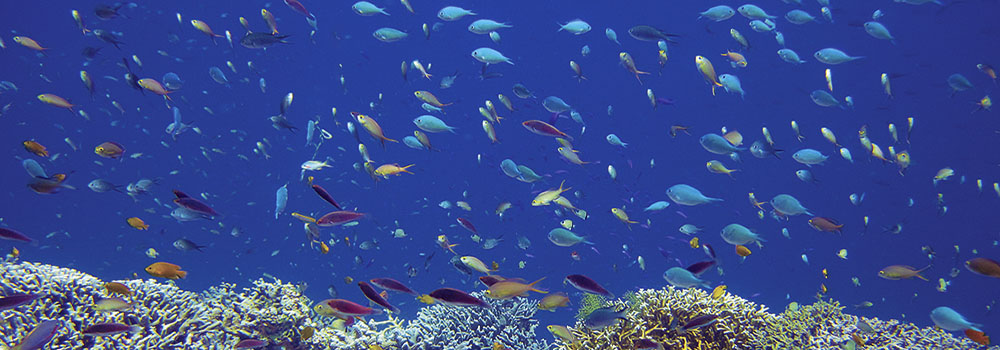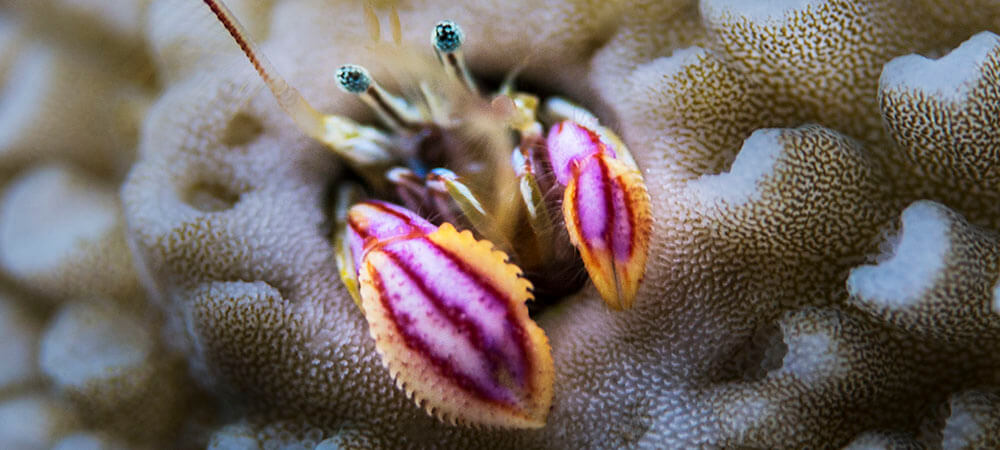
Biodiversity and the Coral Triangle, part 1
Biological diversity, or biodiversity, is essentially all of the variety of life in all of its manifestations, including the totality of genes, organisms, and ecosystems at all levels of biological organization. In most and simpler contexts, marine biodiversity refers to the number of different species inhabiting the sea. The Coral Triangle is a geographical term used to describe the region that possesses the world’s highest levels of marine biodiversity. The roughly triangular-shaped area encompasses waters surrounding the countries of the Philippines, Malaysia, Indonesia, Timor Leste, Papua New Guinea, and the Solomon Islands.
As the name implies, the parameter for inclusion in the Coral Triangle revolves around the total number of scleractinian corals (hard corals) in a given area. Any country or region with a body of water that contains more than 500 species of hard corals gains entry into this elite club. As it turns out, the boundary line embracing the coral-rich areas is shaped like a triangle. But as tropical marine fish experts started to look at the spatial patterns of fish species, the familiar triangular-shaped pattern that defined the area with the highest levels of coral diversity was true for fish diversity as well. Although the number of marine fishes is not a consideration for entry, areas within the Coral Triangle tend to have more than 1200 species of fish with recent surveys yielding closer to 1500 species for places like Raja Ampat and the Philippines. The Coral Triangle, in terms of marine biodiversity, may be easy to describe, but it is much more complicated and interesting to ask why this area has so many species compared to other areas in the world.
The answer to why areas like the Coral Triangle harbor the world’s highest levels of marine biodiversity begins not with the individual organisms, but with geologic processes that began hundreds of millions of years ago. Plate tectonics, continental drift, and the advance and retreat of glaciers gave rise to the theory of vicariance. This theory postulates that physical barriers to reproduction appear and disappear at random and can disrupt gene flow between populations. The advance and retreat of glaciers is the most tangible and recurring example. Glacial periods have encrusted the earth with ice at least 21 different times over the past several million years. It is believed that approximately every 140,000 years, glaciers gradually grow and recede as the result of small changes in the orbit of the earth around the sun. When glaciers advance over continental landmasses a concomitant drop in global sea levels occurs due to huge volumes of water changing from a liquid to a solid. During the most recent Ice Age, sea levels dropped by an estimated 120 meters. Such a drastic change over a short period of geologic time quickly transformed large tracts of ocean floor into dry land.

The diagram depicts the uncovered land mass (brown) based on the last ice age (c. 20,000 – 11,700 years ago) that tied up enough seawater in the ice sheets to lower sea levels up to 120 m.
In areas where seas are relatively shallow, the impact of this change would have dramatically affected the geographical distribution of many species. For example, during those times, the landmasses that comprise the islands of present-day Borneo, Java, the Philippines, and Sumatra were physically connected to the Asian continent. This newly formed ‘land bridge’ enabled terrestrial organisms to migrate extended distances, but would have impeded dispersal of marine organisms, effectively separating species’ populations and stopping gene flow.
This type of species ‘splitting’ is referred to as allopatric speciation, and it is recognized as probably the most frequent method by which new fish and invertebrates evolve in the Coral Triangle. Also known as geographic speciation or vicariance, allopatry occurs when a physical or ecological barrier, such as an island, deep water, or even an oceanic surface current, separates a breeding population. The resulting hurdle prevents sexual reproduction and the exchange of genetic material among members of the now isolated populations. Over successive generations, the genetic composition of each group will change, eventually manifesting as distinct species no longer capable of producing viable offspring by interbreeding.
Though barriers that separate species are an important driver for speciation, another key factor supporting high levels of biodiversity is the availability of ecological niches, which is defined as the physical location where a species or population lives and how that species responds to the distribution of natural resources. In effect, a niche refers to how an organism makes its living. It is important to point out that a fundamental tenet of ecological theory stipulates that organisms cannot occupy the same niche, or make their living the exact same way. The lavish array of fish and invertebrates inhabiting the Coral Triangle inevitably competes with other individuals of the same species and different species for vital resources. Natural selection, as the mechanism for evolution, states that some individuals within a population will be more successful at competing for resources and more apt to reproduce than others, thereby hinting at the benefits of adaptive change over time. Niche diversity, or the number of ways different organisms make their living, in the Coral Triangle is astronomical. This is likely due, in part, to the diversity of marine habitats, the limited availability of nutrients, and the stable environment combined with high amounts of solar energy; the latter two further facilitating the abundance of symbiotic interactions.

Ecological niches are defined by the combination of a physical location and how the organism responds to and uses natural resources. For example, coral hermit crabs (Pagurita spp.) reside in the abandoned tubes of feather duster and Christmas tree worms (order Sebellida) that are found only in species of hard coral. Strong competition on the reef contributed to their retreat into this permanent refuge where generations successfully adapted to utilize available resources. In this case, hiding in the coral caused an adaptative response that resulted in the loss of their shell and the evolution of their antennae into apparatuses for capturing plankton.

